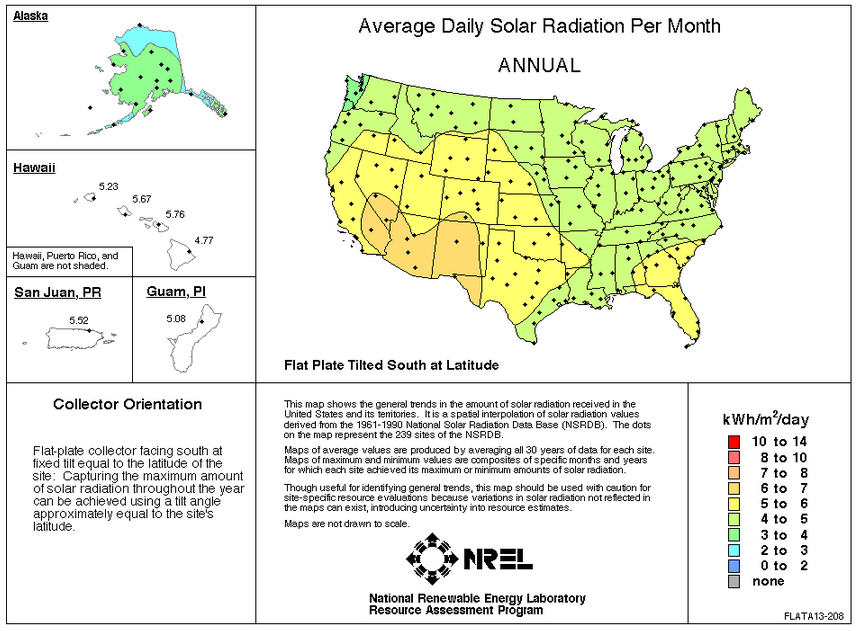And ERD, at least in my area, everyone does gain from my solar panels.
There is less drain, and upgrades on our utility's equipment as I am using less power, some of that during peak loads.
When my house is using 10kWh of power from my panels, that is 10kWh + grid inefficiencies less power my utility needs to transmit.
The utility won't need to build additional power generation as quickly as they would have, helping to keep rates from increasing as fast.
Sure, it isn't a lot, but there is some benefit. Does it balance out? I don't know, but lots of other subsidies for oil, coal, children, schools, etc don't either.
There are other factors at play. For example, most HVAC codes require increased fresh, outside air intake versus what used to be required 20-30 years ago. As new buildings are built, and existing ones are remodeled, they have to upgrade HVAC units with more fresh outside air. Which means more outside air has to be conditioned in the summer. Which means more electricity usage during peak times.
The problem with peaks is that you have to design for full capacity for it, to avoid rolling blackouts. And even though your 10kW solar panel is producing netbacks to the grid, the big thing is the starting/stopping of your AC unit. When a large motor kicks on for an AC compressor and fan, there's a HUGE relative surge in electricity for a second or two, far beyond what your solar panel is producing. So even though they may have 10 homes on a grid producing excess electricity, there's still that huge initial jump when the AC units go on that the utility has to design and build for.
Same for the commercial markets.
I hear this a lot, but I wonder. Don't the rates charged for electricity cover the construction of needed generating capacity? And if they are increasing the generating capacity, doesn't that mean they are selling more "units"? If so, why would building a new plant necessarily increase the >rate< charged for electricity?
When Kroger builds a new store across town, I don't worry that the prices in my neighborhood Kroger will be going up to pay for the construction. When Honda builds a new plant, I don't conclude that CR-Vs will need to go up in price to cover it.
There are 2 big factors at play:
1) NIMBY - they can't stick a power plant anywhere, so there is a fair amount of infrastructure that has to be built/upgraded, typically a good distance from the existing grid, in order to bring the new plant into the grid. It's far easier for Kroger to put a new store in a relatively efficient place (and have far fewer protests) than it is for a utility to plop a new power plant in a "grid efficient" location.
2) New regulations - looking at proposed coal regulation, the switch to far more expensive sources of power will be a significant increase in the cost to utilities. And remember that unless you want rolling blackouts like California, there always has to be excess power being produced by the utility to meet peak demand. You can't just flip a switch and shut down a coal burner at 7pm because a lot of demand has dropped off -it's far more efficient to keep a coal plant burning 24/7, than shutting it down at 10pm, letting it cool down, and fire it back up again at 4am (many commercial HVAC systems start their summer morning cool-down programs at 4am-5am)
And you could switch to natural gas burners that could shut down when there's some reduced demand - but that's not cheap to replace or build new, compared to an existing or new coal burner.
As there is a slowing growth in electricity demand, the utility companies must still design their grids to meet maximum peak demand, despite an average electricity load that may not be as high as before. So that means a lot more 'wasted' electricity is being produced in order to meet that high peak demand, to avoid the rolling blackouts due to peak demand not being satisfied.
If you have solar panels or windmills that are variable in their electricity output, it's even more of a challenge to the utilities. Imagine if 10% of your electricity output were based on the unpredictability of the wind or how much cloud cover you have? In order to avoid blackouts, that means you essentially have to have as much as 10% excess electricity output from your coal/natural gas plants to make up for the shortfall in the event the solar panels/wind turbines are only producing a few percent.

